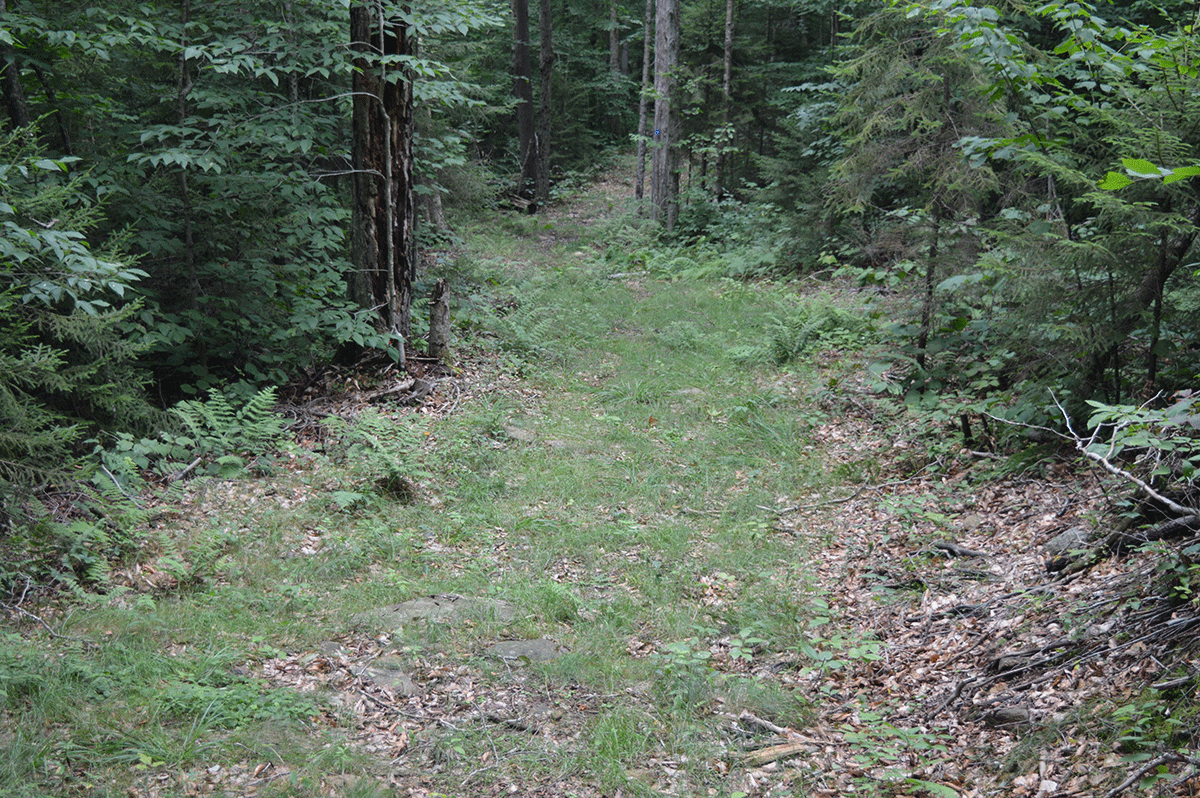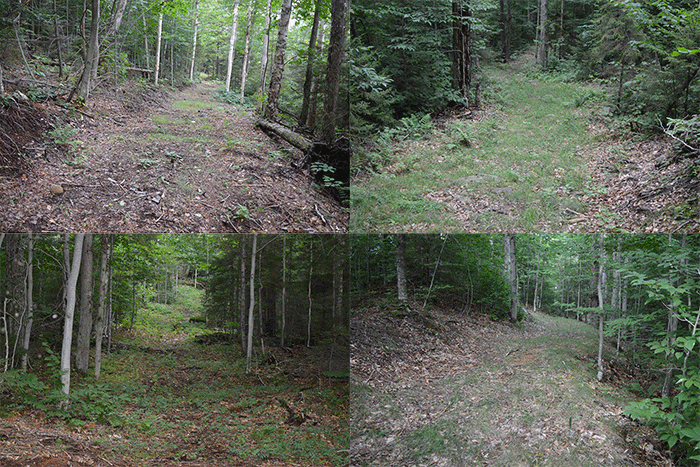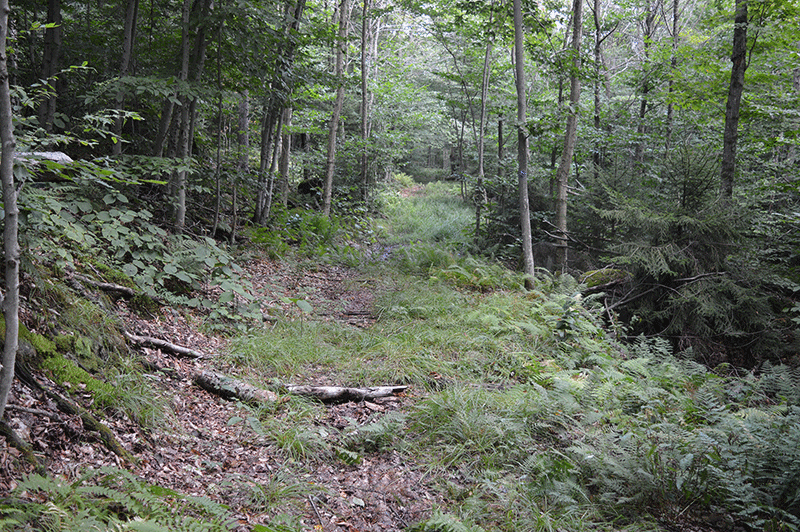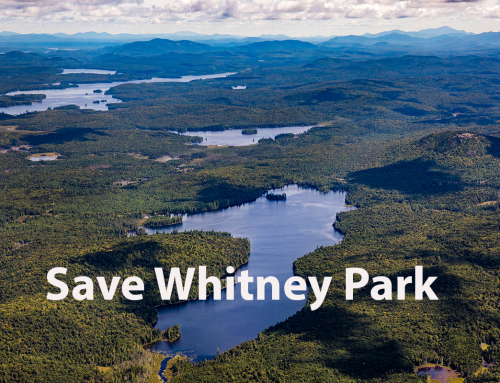DEC and APA have embraced a new plan for wide snowmobile trails that violate the constitutional protections for the Forest Preserve and recent court decisions.
The Department of Environmental Conservation (DEC) and Adirondack Park Agency (APA) are poised to once again violate Article 14, Section 1, the famed “Forever Wild” clause, of the New York Constitution by proposing new snowmobile trail standards that are patently unlawful. In 2021, the New York State Court of Appeals, the state’s highest court, struck down plans by DEC and APA to build hundreds of miles of Class II Community Connector snowmobile trails, finding that the extra-wide trails requiring wide cleared corridors that were flattened and graded with heavy machinery and the destruction of tens of thousands of trees violated the Forever Wild clause. See Protect the Adirondacks v. DEC, 37 NY3d 73, 77 (2021).
Remarkably, the agencies have recently proposed “new” snowmobile trail standards that incorporate many of the features that were rejected by the Court of Appeals as unconstitutional.
The unconstitutional Class II trails were authorized under a 2009 joint DEC-APA “Management Guidance” policy that allowed the trails to be built to a width of 9-12 feet. The policy contained two major loopholes that shaped how Class II trails were built. The first loophole authorized “limited” use of heavy machinery for grading trail surfaces flat, but in practice heavy machinery was used to grade the trails from end to end. The second loophole allowed “bench cuts,” the graded and tapered areas above and below a wide trail cut into the side of slope, to extend well outside the 9-12-foot trail width area. Since bench cuts were not counted as part of the trail width, this resulted in widespread tree cutting and terrain grading well beyond a 12-foot-wide trail corridor and in many instances Class II trail corridors were constructed 20 feet wide and wider.
The State’s highest court rejected these excessive trails widths, terrain changes, and tree cutting when it found Class II trails to be unconstitutional. The Court of Appeals came to this conclusion because DEC’s “plan requires the cutting and removal of thousands of trees, grading and leveling, and the removal of rocks and other natural components from the Forest Preserve to create snowmobile paths that are nine to 12 feet in width.”
DEC-APA had been stopped from building new Class II trails with injunctions and restraining orders during the legal battle from 2017 to 2021, and in the wake of the Court of Appeals decision, the DEC Commissioner rescinded the snowmobile trail construction and maintenance “Guidance” that had sanctioned the Class II trails. In its place, the DEC stated that it would go back to an old snowmobile policy called Office of Natural Resources-2 Snowmobile Trails (ONR-2) from the late 1990s to guide its snowmobile trail construction and maintenance.
ONR-2 allows what’s called a “Class A” snowmobile trail, which can be constructed and maintained to a width of 8-12 feet. Apparently in DEC’s mind, all the agency has to do to comply with Forever Wild clause and the Court of Appeals’ decision is to shave one foot off of the trail width minimum while maintaining the other Class II trail features. This approach is sure to fail a constitutional analysis.
The Court of Appeals found that trails that are nine feet wide with “sharp curves, steep slopes, and bridges, where a 12-foot width is allowed – the same width as an interstate highway lane and enough to accommodate two SUVs, side-to-side” was unconstitutional. Class A trails under ONR-2 may be one foot narrower in some places but still allow at their maximum “a 12-foot width” on all “sharp curves, steep slopes, and bridges,” and are essentially identical to the trail dimensions found to be unconstitutional.
Even more troubling is that ONR-2 doesn’t address bench cuts, the trail building practice that requires extensive terrain changes outside the trail corridor. The Court of Appeals specifically noted how bench cuts can change the character of a snowmobile trail corridor, stating that “bench cuts – cuts into sloped ground and removal of the cut soil, rock and trees to create a ‘bench’ upon which a trail can be placed – require clearing the land on the up- and down-slopes of the trail, resulting in the clearing of the forest floor up to 20 feet in width in certain areas – a span wide enough to site a two-car garage.”
ONR-2 is also outdated because it only recognizes trees that enjoy constitutional protections at a size of 3 inches DBH (diameter at breast height), whereas the 2021 Court decision recognized a tree as a tree at 1” DBH. DEC’s new Forest Preserve Work Plan policy (CP-78) requires counting of all trees 1” DBH or greater during management activities, so ONR-2 does not even conform with DEC’s own Forest Preserve policy.
In the wake of the 2021 Court of Appeals decision that found that DEC and APA had violated the Forever Wild clause, the agencies formed the Forest Preserve Trails Stewardship Working Group to revise and upgrade trail management and design standards. This group has been working for nearly three years, and includes members from local government, trail building groups, and environmental groups in both the Adirondack and Catskill parks. Protect the Adirondacks participates in this group. The Working Group’s main success to date was helping to develop the new Work Plan policy (CP-78), which sets out DEC policy for how new projects on Forest Preserve lands, such as the construction and maintenance of trails, campsites, bridges, trailhead kiosks and parking lots, are to be planned, reviewed and undertaken.
As part of the Working Group efforts, DEC-APA staff prepared draft “trail design parameters” for hiking trails, bicycle trails, snowmobile trails, cross-country ski trails, and horse trails. The Working Group reviewed these drafts and provided written comments and additional comments at group meetings. The trail design standards are accompanied by a new draft “Forest Preserve Trails Guidance” that sets out policy and management objectives for the trail standards. DEC aims to bring both drafts to the APA this fall for review and then hold public hearings and a public comment period.
The Trail Design Standards with the biggest problems are the Snowmobile Design Standards. DEC-APA are proposing snowmobile trail standards nearly identical to those found by the Court of Appeals to be unconstitutional. Protect the Adirondacks, and a number of other Working Group participants, have urged DEC-APA to revise the proposed snowmobile standards to ensure conformity with Article 14, but at this point the state agencies seem determined to once again force a constitutional showdown.
This decision by the DEC-APA is simply not rational or responsible public policy. It’s difficult to express how disappointing it is that after the 2021 Court of Appeals decision ruling that the construction of Class II trails violated Article 14, these agencies are planning to basically build the same type of constitutionally impermissible snowmobile trail.
At the last meeting of the Trails Stewardship Working Group in September 2024, DEC-APA staff stated that they plan to base their new draft Snowmobile Trail Design Standards on the outdated and unconstitutional ONR-2. They stubbornly asserted that ONR-2 complies with the State constitution. They also stated that they had not contemplated how bench cut widths will be managed under the new Forest Preserve Trails Guidance or Snowmobile Design Trail Parameters. That is a major oversight indeed.
The new Forest Preserve Trails Guidance must comply with Article 14. The new snowmobile trail design standards must also comply with Article 14. That the DEC-APA are planning to effectively thumb their noses at the Forever Wild clause is a sad chapter in the history of New York’s two leading environmental agencies.
Protect the Adirondacks and others have urged the DEC-APA to change course and to get on the right side of Forever Wild in their management of the Forest Preserve. We won’t know about their decision until they present the new policy and trail standards to the APA this fall. This will be followed by a public hearing and public comment period where we will rally New Yorkers to stand up for the Forever Wild Forest Preserve.








